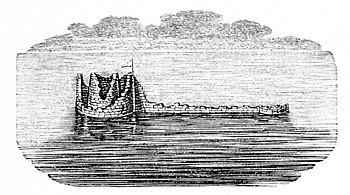1800 to 1850, or one in about five days. The means of detecting and recording shocks are now so perfected, that, when applied in all parts of the globe, they will, doubtless, fully justify our statement that in no instant of time is the earth's crust free from vibrations. The seismograph is an instrument for the "automatic registration of earthquake-shocks."
An interesting account of this instrument, by George Forbes, was published in the September number of The Popular Science Monthly.
Earthquakes have been defined to be a "travelling zone of vibration." The movement is in every direction from the area of disturbance, and the velocity depends on the substance and structure of the material through which it is transmitted. In New Zealand, in 1848, people on the shore witnessed the disastrous progress of the earthquake along the mountains before they felt the shocks. At Messina, during the Calabrian earthquake, the terrified inhabitants saw villas overthrown upon the coast by shocks which they had not felt, but which in a moment laid in ruins a portion of their own city. The velocity with
Fig. 8.

View of the Fort of Sindree from the West, in March, 1838.
which the vibrations travel has been a subject of careful investigation. The Lisbon earthquake moved about 20 miles in a minute; that which occurred in 1819, in the delta of the Indus, appears to have moved at the rate of 53 miles in a minute, or nearly 5,000 feet in a second. Other observations show that the movement may be from 1,000 to 5,000 feet per second. It has been ascertained that in blasting rocks the vibrations move in a second from 1,000 to 1,700 feet. The sound-waves move more rapidly, and, for this reason, shocks are usually preceded by subterranean rumbling. The velocity of sound through uniform strata is ascertained to be from 8,000 to 10,000 feet in a second. Tyndall found that sound-waves moved through burnt clay nearly ten times more rapidly than through air at a temperature of 32° Fahr. From this the phenomena of earthquake movement might

